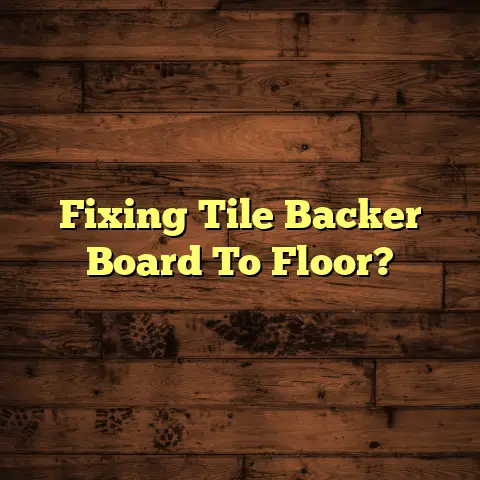Hardwood Flooring In Philadelphia: Top Picks For Your Home? (Explained)
Did you know that hardwood flooring can actually last over a century if properly maintained? As a flooring contractor with years of experience, I’ve seen firsthand how a well-chosen hardwood floor can transform a home and stand the test of time—both in style and durability. In Philadelphia, where the charm of historic architecture meets modern design, hardwood flooring is a popular choice for homeowners looking to add warmth and character to their spaces.
My Journey with Hardwood Flooring in Philadelphia
I remember my first significant project in Philadelphia—a charming old row home in Fishtown. The homeowner wanted to renovate the living room and dining area but felt overwhelmed by the options available. After assessing the space, I suggested a classic oak hardwood floor. The rich tones and natural grain would complement the home’s historic features while providing a timeless appeal.
Choosing the Right Type of Hardwood
When selecting hardwood, it’s essential to consider the type that best suits your lifestyle and home environment. Here are some of my top picks based on my experience:
- Red Oak: This is one of the most popular choices. Its versatility allows it to blend seamlessly with various decor styles. I’ve installed red oak in numerous homes, and clients often rave about its durability and ease of maintenance.
- White Oak: Slightly harder than red oak, white oak has a more muted color palette that works beautifully in modern settings. During a recent project in Center City, I installed white oak floors that perfectly matched the homeowner’s minimalist aesthetic.
- Maple: If you’re looking for something a bit more unique, maple offers a light, clean look. I installed maple hardwood in a loft-style apartment in Northern Liberties, and it added just the right amount of brightness to the space.
Installation Insights
The installation process can be both exciting and challenging. I’ve learned that preparation is key. Before starting any project, I always measure the area carefully to determine how much flooring is needed. Using FloorTally has been an invaluable tool for me in this step. It helps me estimate costs accurately by pulling local material and labor rates. This way, I can provide my clients with realistic budgets from the get-go.
My Installation Process
- Preparation: I ensure the subfloor is clean, dry, and level. If necessary, I use a moisture meter to check for any issues that could affect the hardwood.
- Acclimation: I allow the hardwood to acclimate in the space for several days before installation. This step prevents future warping or buckling.
- Installation Method: Depending on the type of hardwood, I choose between nail-down, glue-down, or floating methods. For example, in that Fishtown home, we opted for the nail-down method since it suited the solid red oak flooring best.
- Finishing Touches: After installation, I always recommend applying a protective finish. This not only enhances the wood’s natural beauty but also helps protect it from scratches and stains.
Maintenance Tips
Keeping hardwood floors looking great requires some effort, but it’s well worth it. Here are some tips I’ve found helpful:
- Regular Cleaning: Sweep or vacuum your floors regularly to remove dirt and debris that can scratch the surface.
- Avoid Excess Water: When mopping, it’s important to use a damp mop rather than soaking wet. Excess water can damage hardwood over time.
- Use Rugs: Placing rugs in high-traffic areas can help minimize wear and tear.
- Maintain Humidity Levels: Wood is sensitive to humidity changes. Keeping indoor humidity between 30% and 50% can help prevent warping.
Successes and Challenges
While I’ve had many successful installations, challenges do arise. One project that stands out was a large-scale renovation in West Philadelphia. The homeowner wanted to replace old carpeting with hardwood throughout the entire house. As we removed the carpet, we discovered extensive water damage beneath it.
Instead of backing down, I collaborated with the homeowner on a plan to replace damaged sections of the subfloor before proceeding with the hardwood installation. This experience reinforced the importance of thorough inspections before starting any project.
Comparing Different Options
In my years of experience, I’ve often had clients weigh their options between solid hardwood and engineered hardwood. Here’s what I’ve learned:
- Solid Hardwood: Typically thicker and can be sanded down multiple times over its lifespan. It’s perfect for homes where longevity is a priority. However, solid hardwood can be sensitive to moisture levels, making it less ideal for basements or areas prone to humidity.
- Engineered Hardwood: Offers greater resistance to moisture due to its layered construction. I recently installed engineered hardwood in a basement in South Philly, and the results were impressive. It looked just as stunning as solid wood but was more suitable for that environment.
The Cost Factor
In Philadelphia, hardwood flooring costs can vary significantly based on materials and installation complexity. On average, homeowners can expect to spend between $6 to $12 per square foot for solid hardwood flooring, including installation.
Using FloorTally allows me to provide clients with accurate estimates tailored to their specific needs. For instance, during my last project in East Falls, we managed to stay within budget by utilizing this platform effectively.
Different Styles and Finishes
In addition to choosing the right type of hardwood, selecting the right finish is crucial for achieving your desired look. Here are some finishes I’ve worked with:
- Oil-Based Finish: Offers a warm glow and enhances the wood’s natural beauty. However, it takes longer to dry and has a stronger odor during application.
- Water-Based Finish: Dries quickly and has less odor, making it ideal for indoor projects. It provides a clear finish that doesn’t alter the wood’s color significantly but may require more frequent reapplication over time.
- Natural Finish: For those wanting a more rustic look, natural finishes can showcase the wood’s texture without adding much sheen. I’ve used this finish on reclaimed wood projects that highlight its character beautifully.
Seasonal Changes and Their Impact
In Philadelphia, we experience all four seasons, which means our homes go through changes in temperature and humidity throughout the year. These fluctuations can impact hardwood flooring if not properly managed.
- Winter: The dry air from heating systems can cause wood to contract, leading to gaps between planks. To combat this, using humidifiers can help maintain moisture levels.
- Summer: Increased humidity can cause wood to expand. Ensuring proper ventilation and air conditioning can help regulate these changes.
Environmental Considerations
As more homeowners become environmentally conscious, selecting sustainable flooring options has grown in importance. When choosing hardwood flooring, it’s beneficial to look for products sourced from responsibly managed forests.
During one project, I worked with a client who specifically wanted FSC-certified (Forest Stewardship Council) hardwood. This certification ensures that the wood comes from forests that are managed sustainably, promoting environmental balance.
Unique Customizations
Another aspect of hardwood flooring that I enjoy is the ability to customize it for each client’s unique taste. Some options include:
- Stains: Changing the color of your hardwood can dramatically alter its appearance. I’ve helped clients choose everything from rich espresso tones to light gray finishes that perfectly match their decor.
- Inlays and Patterns: For those looking for something special, incorporating inlays or unique patterns can provide a stunning focal point in any room. I remember a project where we created a herringbone pattern using oak planks—it turned out beautifully!
DIY vs Professional Installation
While some homeowners opt for DIY installations, I always recommend hiring professionals unless you have extensive experience and knowledge of flooring installation techniques.
I once had a client who attempted a DIY hardwood installation only to realize halfway through that they didn’t have the right tools or expertise. We ended up stepping in to finish the job correctly, which resulted in additional costs and delays.
Flooring Trends in Philadelphia
Like any design element, flooring trends evolve over time. Some current trends I’ve noticed in Philadelphia include:
- Wide Planks: Wider boards are becoming increasingly popular as homeowners seek a more modern look that emphasizes natural beauty.
- Mixed Materials: Combining different types of flooring within open-concept spaces creates visual interest while delineating areas effectively.
- Textured Finishes: Hand-scraped or distressed finishes add character and depth to floors while also being more forgiving when it comes to hiding scratches or dents.
Conclusion
When considering hardwood flooring options for your Philadelphia home, there are many factors to keep in mind—from choosing the right type of wood to understanding installation methods and maintenance requirements. My experiences have taught me that every project is unique and should be approached with careful planning and consideration.
With proper research and attention to detail, you can create a stunning hardwood floor that enhances your home’s beauty while providing lasting durability. Remember to ask questions and gather information about your options as you embark on this exciting journey! Whether you prefer classic elegance or modern charm, your perfect hardwood floor awaits you!





